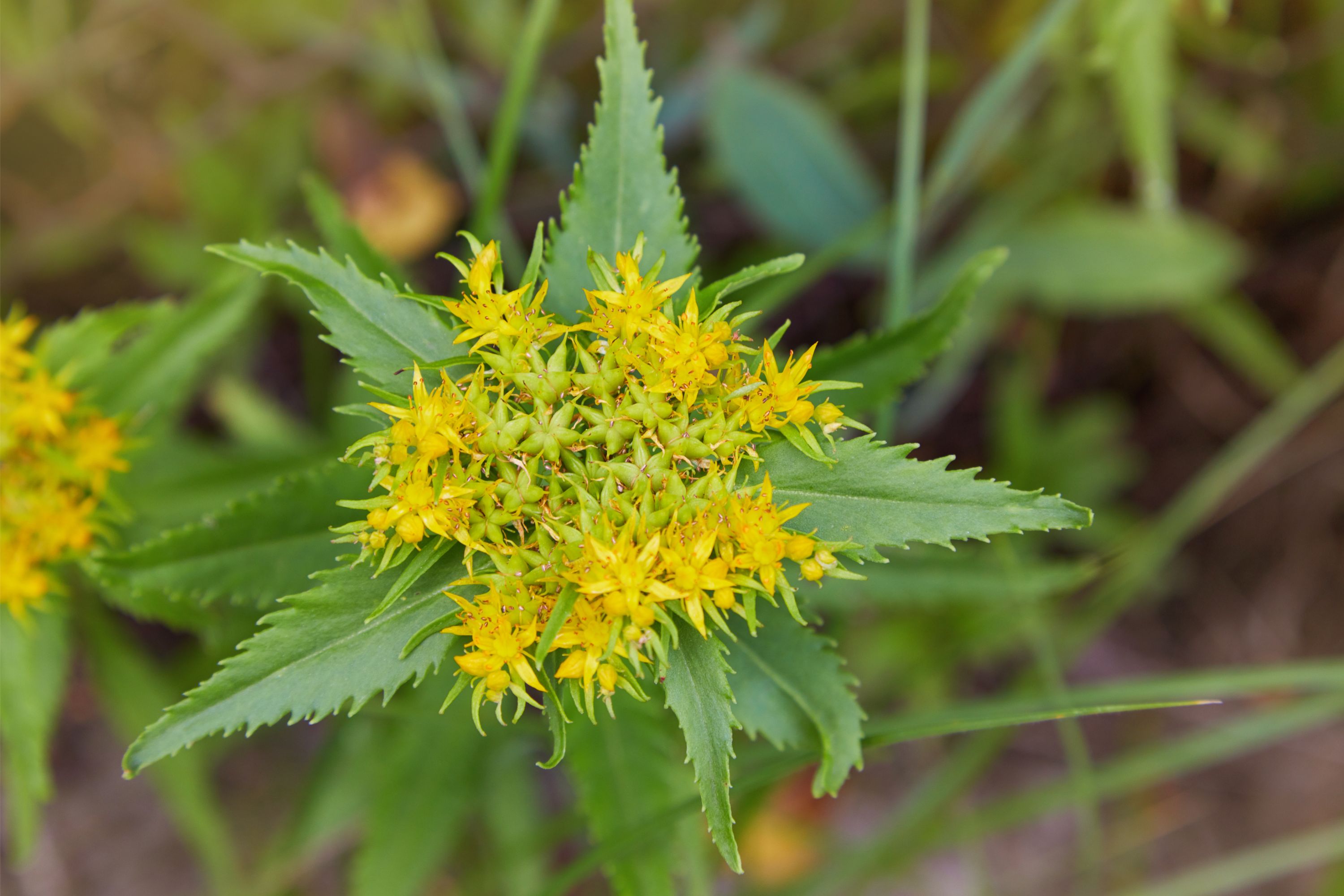Commonly golden root
(Rhodiola rosea)

Description
Rhodiola rosea (commonly golden root, rose root, roseroot, Aaron's rod, Arctic root, king's crown, lignum rhodium, orpin rose) is a perennial flowering plant in the family Crassulaceae. It grows naturally in wild Arctic regions of Europe (including Britain), Asia, and North America ( N.B., Nfld. and Labrador, N.S., QC.; Alaska, Maine, N.Y., N.C., Pa., Vt), and can be propagated as a groundcover. Although Rhodiola rosea has been used in traditional medicine, there is no high-quality clinical evidence of its effectiveness to treat any disease. The United States Food and Drug Administration has issued several warnings to manufacturers of R. rosea dietary supplements for making false health claims about its safety and efficacy. The plant is threatened in many countries due to rapidly growing demand. Supply comes mostly from wild harvesting on an industrial scale, and a combination of growing scarcity and a lack of regulation has led to environmental degradation, substitution or adulteration in the market, and illegal harvesting in protected areas. Rhodiola rosea is from 5 to 40 centimetres (2.0 to 15.7 in) tall, fleshy, and has several stems growing from a short, scaly rootstock. Flowers have 4 sepals and 4 petals, yellow to greenish yellow in color sometimes tipped with red, about 1 to 3.5 millimetres (0.039 to 0.138 in) long, and blooming in summer. Several shoots growing from the same thick root may reach 5 to 35 centimetres (2.0 to 13.8 in) in height. R. rosea is dioecious – having separate female and male plants. Rhodiola rosea was first described by Pedanius Dioscorides in De Materia Medica. Many of North American plants formerly included in R. rosea are now treated separate as Rhodiola integrifolia and Rhodiola rhodantha. About 140 chemical compounds are in the subterranean portions of R. rosea. Rhodiola roots contain phenols, rosavin, rosin, rosarin, organic acids, terpenoids, phenolic acids and their derivatives, flavonoids, anthraquinones, alkaloids, tyrosol, and salidroside. The chemical composition of the essential oil from R. rosea root growing in different countries varies.
Taxonomic tree:







